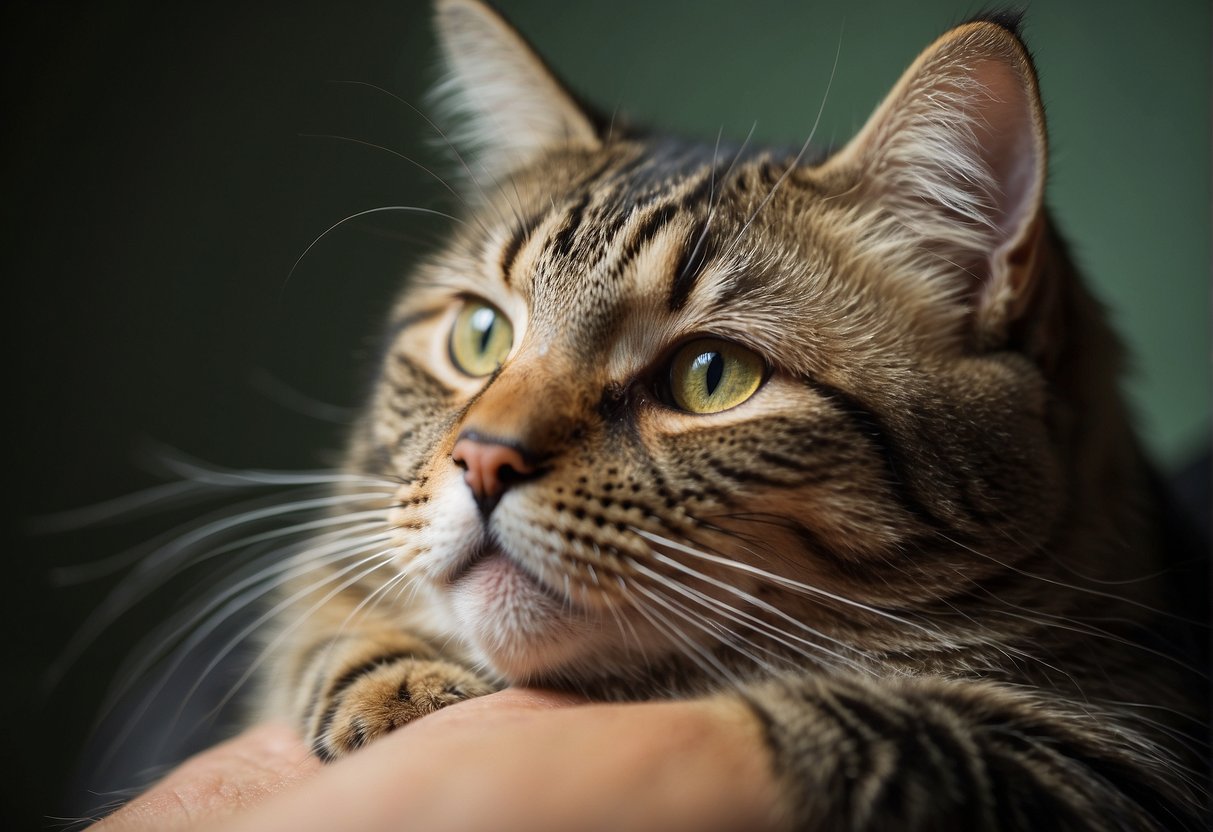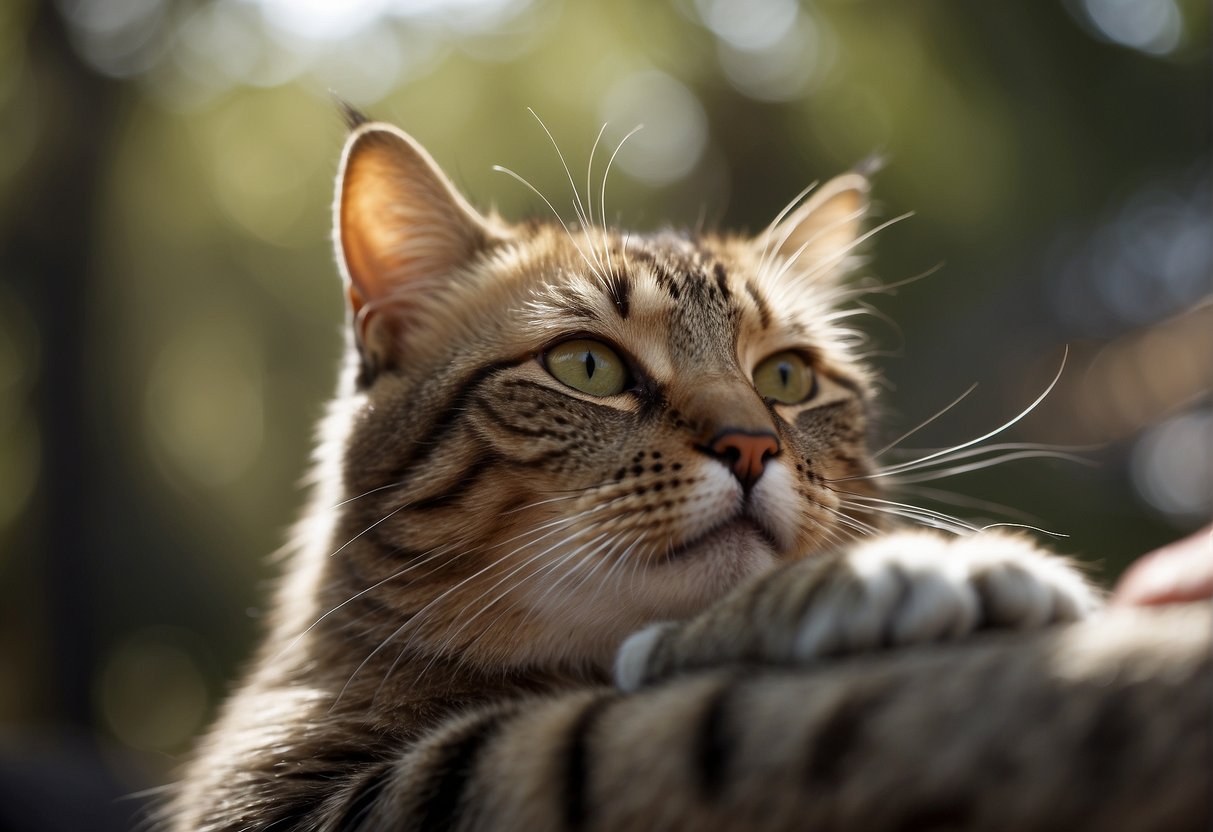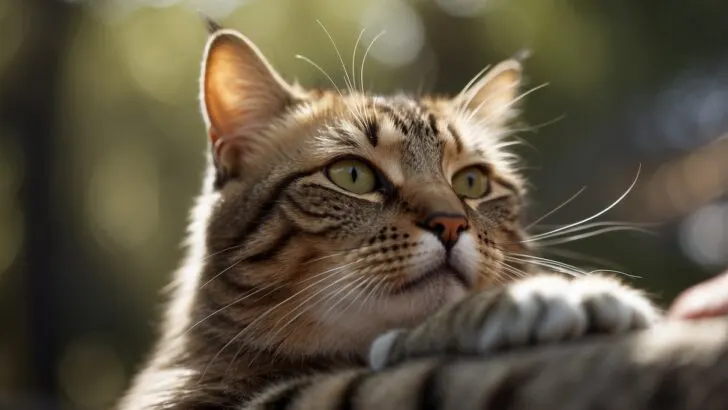Cats have a peculiar fascination with human armpits, and if you’ve ever been on the receiving end of such attention, you’re not alone.
Many cat owners observe their feline companions being drawn to the scent and taste of their armpits. Just the other day, while I was lounging on the couch, my furry friend jumped up and started sniffing my armpit with great interest. It was both amusing and slightly bewildering, a sentiment you might share if your cat has shown the same behavior.

It turns out this quirk isn’t without reason. Your armpit is a source of distinct scent due to the apocrine glands located there, which produce sweat rich in proteins and fats—a combination cats find irresistible. This could be why your cat, like mine, may begin to lick or nuzzle your armpit.
The scent is uniquely you, providing comfort and a feeling of affection for your cat, and they might be showing you, in their own feline way, that they consider you part of their “clan.”
Feline Scent Behaviors

As a cat owner, you might find it fascinating how your feline friend communicates through scent. This section delves into the intricacies of how cats use pheromones and their own unique scents to interact with the world around them, especially their affinity for human armpits.
Role of Pheromones in Cat Communication
Cats have a sophisticated language that’s not about meows or purrs—it’s about scent. Scent glands on a cat’s face, paws, and base of the tail release pheromones, which are chemical substances that can affect the behavior of other animals of the same species.
These pheromones are essential for many aspects of cat communication, from establishing territory to facilitating social interactions.
- Facial Marking: When your cat rubs its cheek against your hand or furniture, it’s depositing pheromones to mark as familiar.
- Paw Pad Marking: Scratching is another way cats leave both a visual mark and a scent, as their paw pads also contain scent glands.
The Significance of Armpit Scents
Now, onto the intriguing behavior of why cats might be drawn to your armpits.
The armpit scents are unique to each person due to the compounds released by apocrine glands, which are rich in proteins and fats that a cat’s sense of smell can easily pick up. This biological signature is like a distinct calling card for your cat, prompting them to:
- Engage in direct scent marking by nuzzling or licking, forming a bond and recognizing you as part of their social group.
- Use the scent to feel comfortable and secure, as unique scents in their environment help cats map out their personal and social spheres.
Cat’s Attraction to Human Armpits
Your cat’s attraction to your armpits may seem odd, but it’s rooted in their natural behaviors and preferences. From grooming habits to their keen sense of smell, several factors contribute to this peculiar fascination.
Grooming and Licking Patterns
Cats are meticulous groomers, often using their tongues to clean and maintain their coat. This behavior extends to their human companions as a sign of affection and bonding.
When your cat licks your armpit, they may be attempting to groom you, contributing to their social bonds. The act also allows them to leave their scent on you, marking you as part of their territory.
- Licking behavior: Sign of grooming and affection.
- Territorial scent-marking: Armpits are accessible spots for leaving their scent.
Taste and Smell Preferences
The human armpit is a hub of scents and tastes that cats find intriguing. Sweat not only contains salt, which cats may find appealing, but also releases personal smells that a cat can associate with their owner.
Moreover, secretions of proteins and fats in this area can catch your cat’s attention. Be mindful of products like deodorant or antiperspirant, as some cats might be attracted to or repelled by these additional scents.
- Attracted to salt: Cats may like the taste.
- Scent recognition: Associates your unique smell with security.
Comfort Seeking Behavior in Cats
Much like humans, cats seek comfort and security in their environment. Snuggling into your armpit could be a cat’s way of finding warmth and comfort, akin to their behavior when seeking out enclosed spaces. Your scent in this area can provide a sense of familiarity and soothe your cat, reinforcing their bond with you.
- Associations with comfort: Familiar scents and warmth.
- Security: The scent can be soothing and reassuring for cats.
Health and Nutrition Aspects Related to Cat’s Behavior
When considering why your cat might be drawn to your armpits, it’s important to examine the health and nutritional perspectives that influence feline behavior. Cats have specific dietary needs that impact their actions, so let’s explore the connection between their nutritional requirements and their occasional fascination with human armpits.
Protein and Diet in Feline Licking
Your cat’s diet heavily relies on protein, as they are obligate carnivores. This means that their bodies are designed to function optimally on a diet high in animal protein.
Curiously, sweat from your armpit contains small amounts of proteins and fats. While it’s by no means a dietary source for cats, the scent might trigger an instinctual interest in tasting due to the presence of these proteinaceous components.
Beyond their immediate diet, cats can sometimes develop a behavior called pica, where they chew or lick non-food materials.
While this could stem from various issues, such as dietary deficiencies or health problems, it’s also possible that an attraction to protein scents like those in your armpit could lead to such behavior.
It’s vital to ensure your cat receives a balanced diet to minimize any health risks related to poor nutrition, which can sometimes manifest in unusual licking behaviors.

My name is James, and welcome to FAQCats!
Along with our team of cat owners, expert pet enthusiasts, and pet professionals, we aim to write engaging helpful, engaging content about cats. At FAQCats we strive to provide content that’s accurate and fun to read. Our team writes about everything related to cats; even the most complex of topics. Through extensive research and caring for our own fur-pals, we’re able to provide something cat owners worldwide will love. Have a look around, and leave us feedback anytime!

